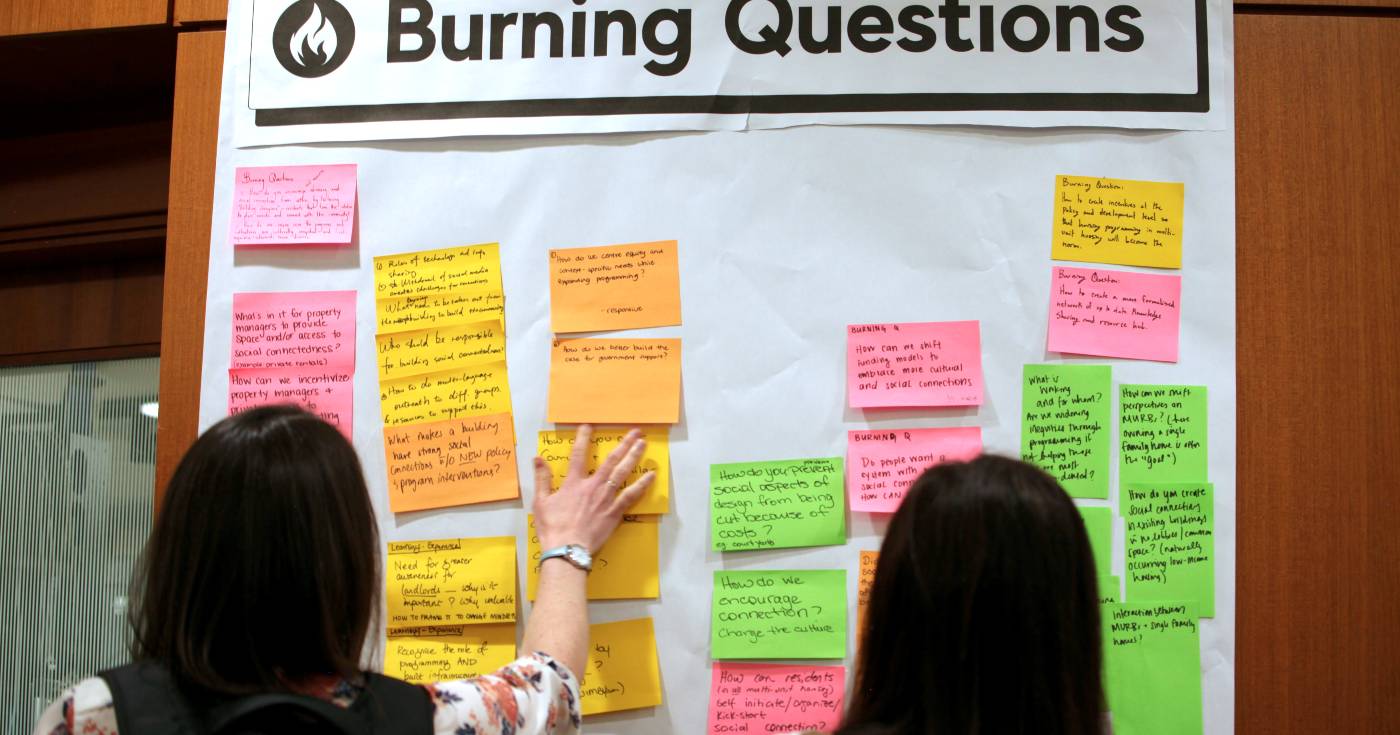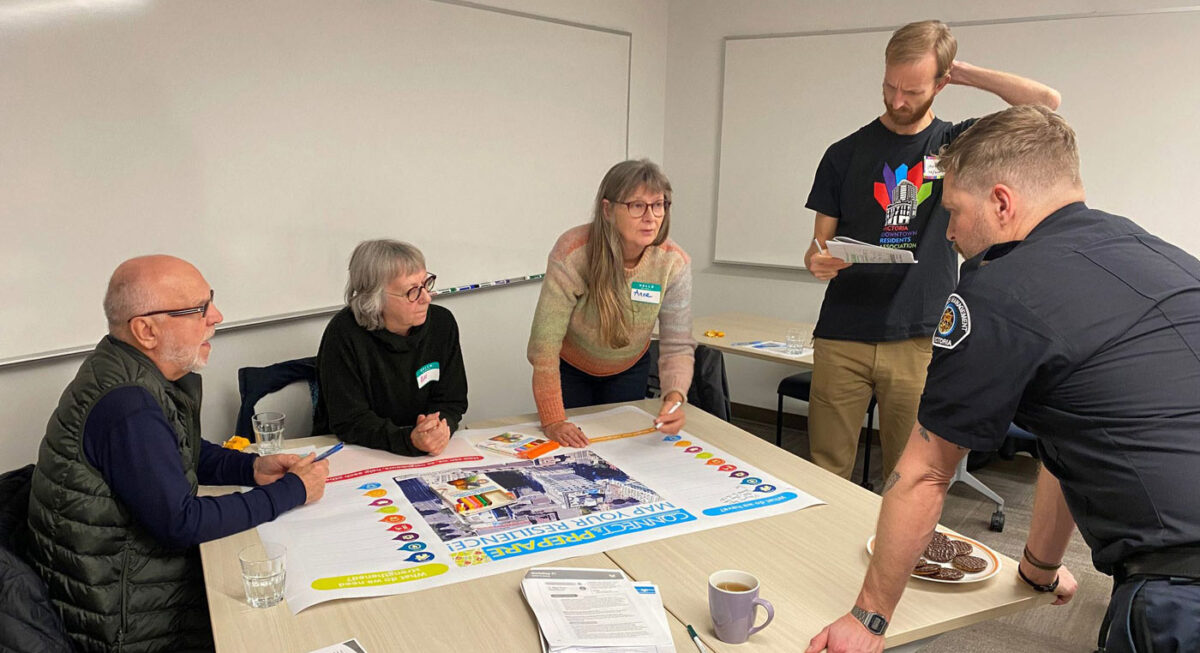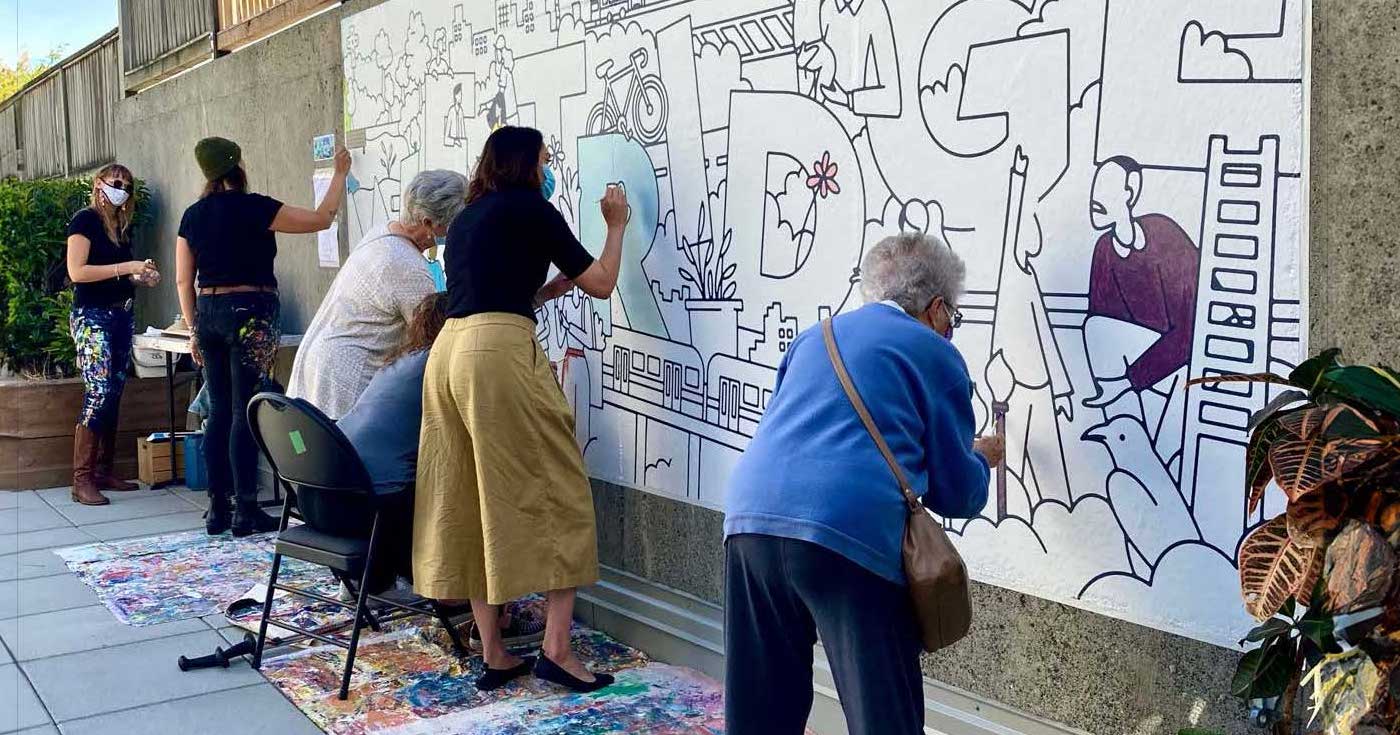HNC feature: The Walrus Talks on place and belonging
Exploring how shared spaces shape community and connection with Michelle Hoar

How do the places where we gather shape how we connect?
This is a question that Hey Neighbour Collective’s Director, Michelle Hoar, explored, alongside a stellar panel of speakers, Anna Gallagher-Ross, Jorge Garza, and Åsa Kachan, at the Walrus Talk on Space and Belonging.
“You would think if you had lots of neighbours in a small space that there would be lots of opportunities for connection, but, often the opposite is true. This is because there isn’t that relational infrastructure that helps people to get to know each other.
And so, we often talk about three key things that create safe spaces for connection: pets, kids, and gardens.”
Michelle Hoar, HNC
Listen to a short clip from Michelle and the full talk below.
Michelle’s excerpt
Full webinar
The idea of “Place and Belonging” is deeply connected to many themes that we and our partners continue to explore in our work. Below is a selection of key resources that examine these topics from a wide range of perspectives, including residents, landlords, municipal governments, older adults, architects, urban planners, and more.
Practice guides
These five practice guides are written specifically for residents, landlords, housing operators, non-profit organizations, and municipal governments. The guides summarize Hey Neighbour Collective’s key learnings about the vital roles that each of these groups can play in fostering neighbour-to-neighbour connectedness and social resilience in multi-unit housing. The guides also point to the top tips, tactics, and strategic approaches, and describe the most common benefits that emerge for everyone involved.
Building Social Connections Toolkit: Toolbox of design actions to nurture wellbeing in multi-unit housing
As governments across Canada push to build denser housing faster, it is critical that we design new homes to support community wellbeing, social connection, sustainability, and inclusion for everyone. This toolkit presents design opportunities to nurture social well-being in housing for people of all ages, backgrounds, abilities, household sizes, and incomes.
Article: ‘Silver tsunami’ or golden opportunity?
Interwoven challenges of aging populations, social isolation, rising housing costs, and climate change are unleashing a global social innovation movement. In this article, we take a high-level look at what the research shows is happening across Canada, and particularly in British Columbia (BC), with respect to aging, housing, social isolation, and climate impacts. We also review a few exciting examples of what’s being done around the world and right here in BC to help transform these emerging challenges into positive change.
Evidence Backgrounder: How social connectedness between neighbours supports health and well-being
Decades of research show that being socially connected helps us live longer, healthier, and happier lives. But it isn’t just our family ties, close friendships, or group membership that make a difference. Evidence reveals that the health benefits of social connectedness can be unlocked starting at home, with our own neighbours. This evidence backgrounder underscores how social connectedness helps keep us all happier and healthier.






